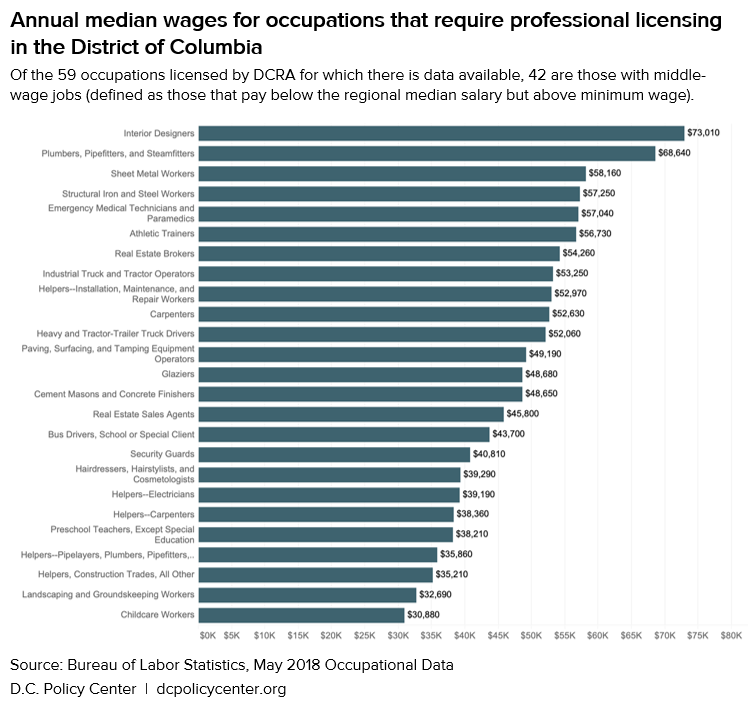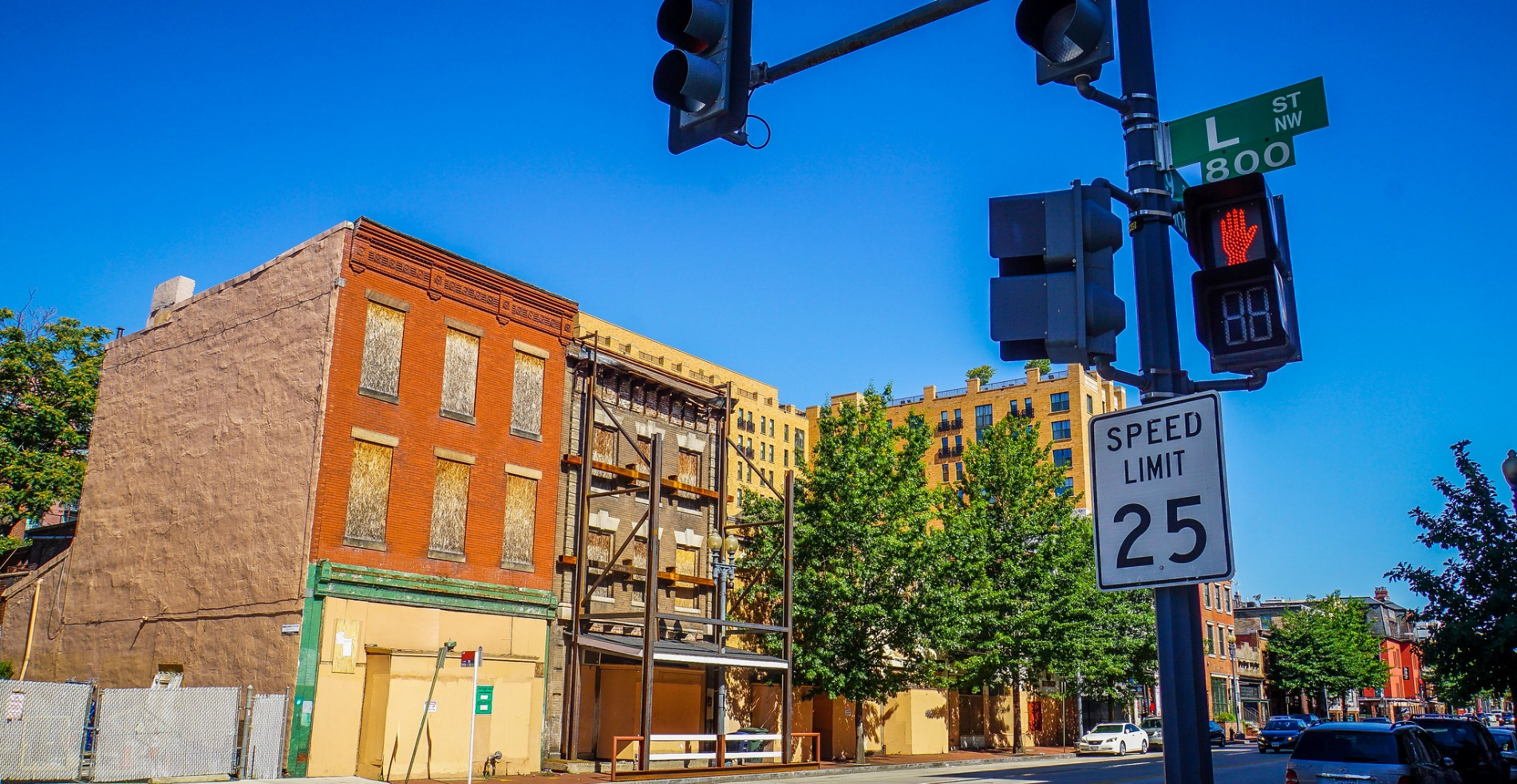The District of Columbia has many factors in its favor making it attractive to workers: high average wages, a variety of employer benefits, strong worker protections, and relatively short commute times. At the same time, the concentration of D.C.’s employment opportunities in high-skill, high-paying jobs means that there are few opportunities for workers without professional degrees. In contrast, the rest of the Washington metropolitan area has a higher concentration of middle- and low-wage jobs, including sales occupations, and occupations in education, transportation, and construction.
D.C. also has created additional barriers for workers who wish to break into middle-wage jobs through aggressive professional licensing: Nearly 12 percent of D.C.’s private sector employment is in occupations regulated by a professional licensing board. This piece gives an overview of the impact role of occupational licensing in D.C., including how many workers are affected and at what general wage and salary levels.
The role of occupational licensing in D.C.
Occupational licensing plays an important role in employment, wages, mobility, and the health of the labor market. State licensing can act as an impediment to worker mobility and when onerous, can close paths to well-paying jobs for low income residents.[1] Licensed workers generally earn more and experience less unemployment than their unlicensed partners across the country. This may seem like a good thing, but only for those who can pay the fees or meet the regulatory requirements; others who are willing to work hard, or learn on the job, are left behind. Licensing also limits mobility, as licensed workers are less likely to move across state lines, which limits their ability to seek higher-paying opportunities in more lucrative markets.
The Department of Regulatory Affairs (DCRA) regulates 125 occupational and professional categories organized under 18 different boards under its Occupational and Professional Licensing Administration. This is in addition to 20 other boards that are responsible for the licensing over 50 health and mental health occupations.
While there is little available public data on who is licensed by DCRA, information from the 2017 Annual Report from the Occupational and Professional Licensing Administration provides data for 12 of the 18 boards under DCRA.[2] This information shows that during that year, DCRA licensed 69,863 individuals for professional activities in D.C. This accounts for nearly 12 percent of private sector employment in the city in that year. The data show that professional licensing impacts many of the District’s middle-wage jobs, sometimes closing opportunities for low-income residents.
Using this data, as well as data compiled by the Institute for Justice[3] and the National Conference of State Legislatures,[4] we identified 59 different occupations that do not require significant post-secondary credentialing (such as those required for doctors, counselors, social workers, or teachers) but require licensing by DCRA. Comparing this data to BLS occupation wage data shows that most of the licensing under DCRA focuses on middle- or low-wage jobs that are attractive to low-skilled District residents who do not have high levels of education or formal training.

Of the 59 occupations licensed by DCRA that we could match to BLS occupational categories, 42 are occupations with middle-wage jobs—paying below the median salary in the region and above minimum wage. Furthermore, 14 of these occupations are associated with lower skill levels but living wages, with median wages between $27,000 and $35,000, These occupations, according to the BLS, collectively employ over 29,350 workers.

The effect of occupational licensing is particularly important in D.C., which has a lower concentration of middle- and low-wage job opportunities in sales, education, transportation, and construction compared with the broader Washington metropolitan area. As we discussed in this year’s State of Business report, Building a competitive city: Strengths, weaknesses, and potential paths of growth for the District of Columbia, just four occupation groups—business and financial, management, office and administrative support, and food service occupations—account for over 45 percent of employment in the District.
